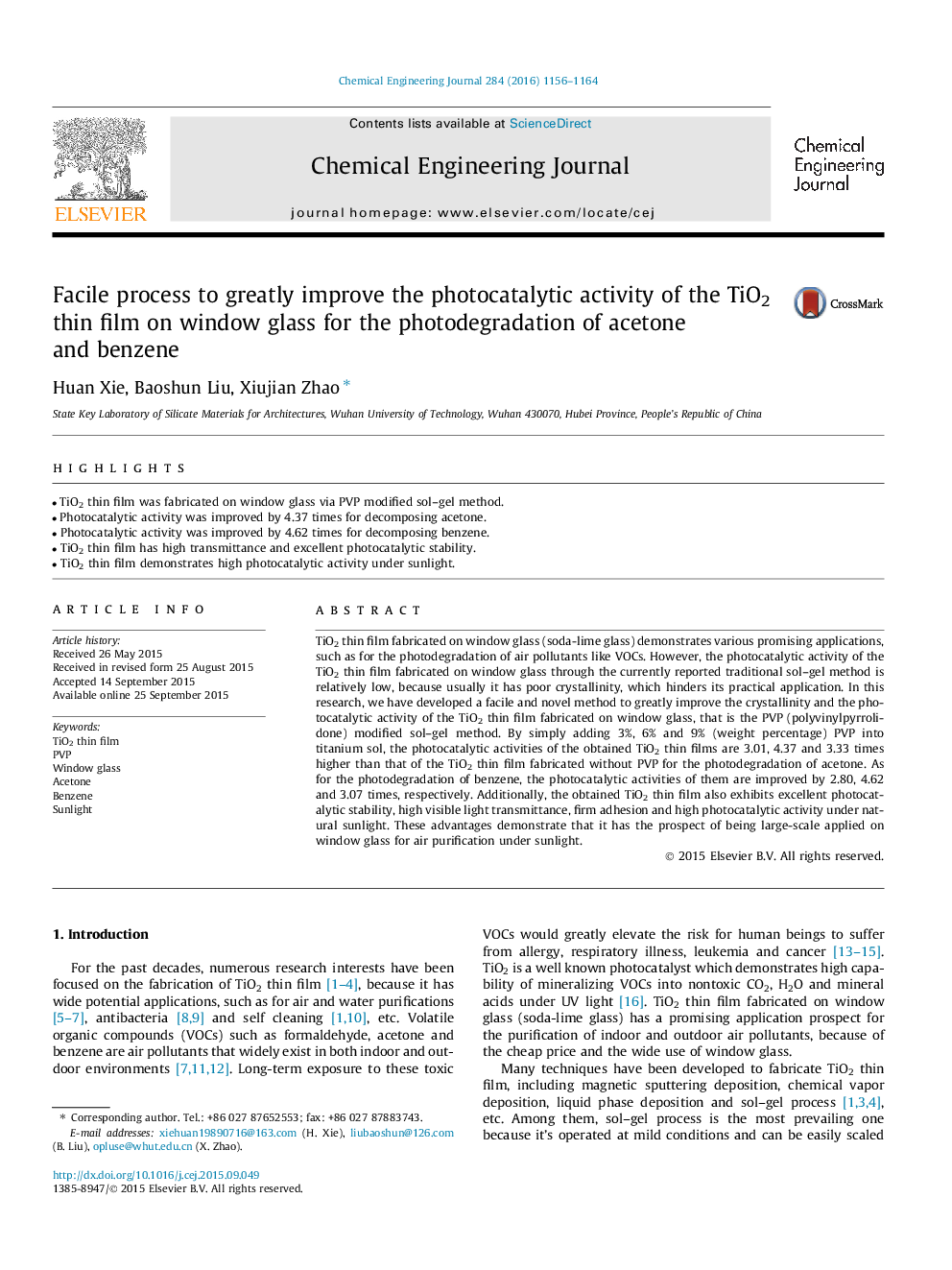| Article ID | Journal | Published Year | Pages | File Type |
|---|---|---|---|---|
| 146024 | Chemical Engineering Journal | 2016 | 9 Pages |
•TiO2 thin film was fabricated on window glass via PVP modified sol–gel method.•Photocatalytic activity was improved by 4.37 times for decomposing acetone.•Photocatalytic activity was improved by 4.62 times for decomposing benzene.•TiO2 thin film has high transmittance and excellent photocatalytic stability.•TiO2 thin film demonstrates high photocatalytic activity under sunlight.
TiO2 thin film fabricated on window glass (soda-lime glass) demonstrates various promising applications, such as for the photodegradation of air pollutants like VOCs. However, the photocatalytic activity of the TiO2 thin film fabricated on window glass through the currently reported traditional sol–gel method is relatively low, because usually it has poor crystallinity, which hinders its practical application. In this research, we have developed a facile and novel method to greatly improve the crystallinity and the photocatalytic activity of the TiO2 thin film fabricated on window glass, that is the PVP (polyvinylpyrrolidone) modified sol–gel method. By simply adding 3%, 6% and 9% (weight percentage) PVP into titanium sol, the photocatalytic activities of the obtained TiO2 thin films are 3.01, 4.37 and 3.33 times higher than that of the TiO2 thin film fabricated without PVP for the photodegradation of acetone. As for the photodegradation of benzene, the photocatalytic activities of them are improved by 2.80, 4.62 and 3.07 times, respectively. Additionally, the obtained TiO2 thin film also exhibits excellent photocatalytic stability, high visible light transmittance, firm adhesion and high photocatalytic activity under natural sunlight. These advantages demonstrate that it has the prospect of being large-scale applied on window glass for air purification under sunlight.
